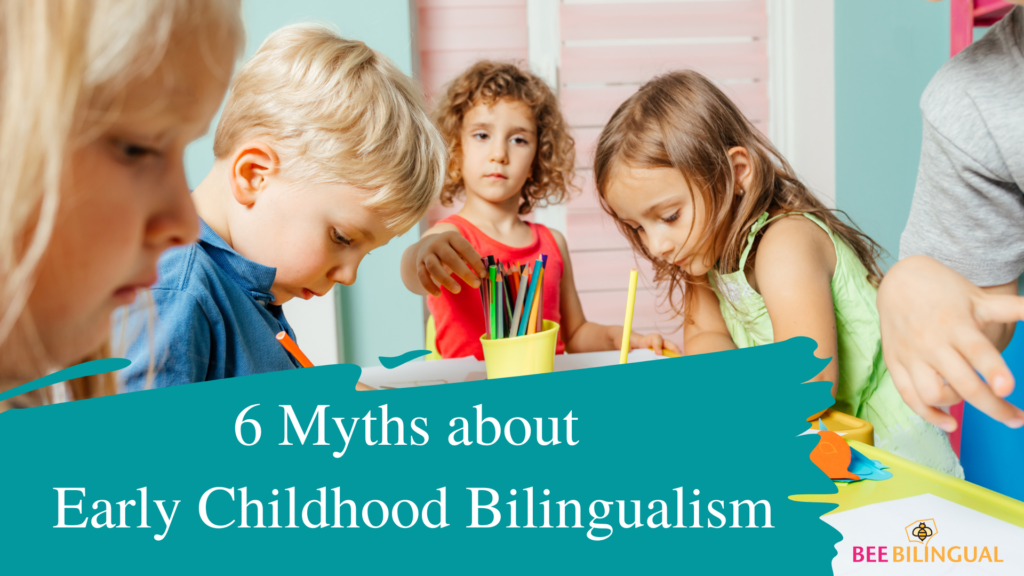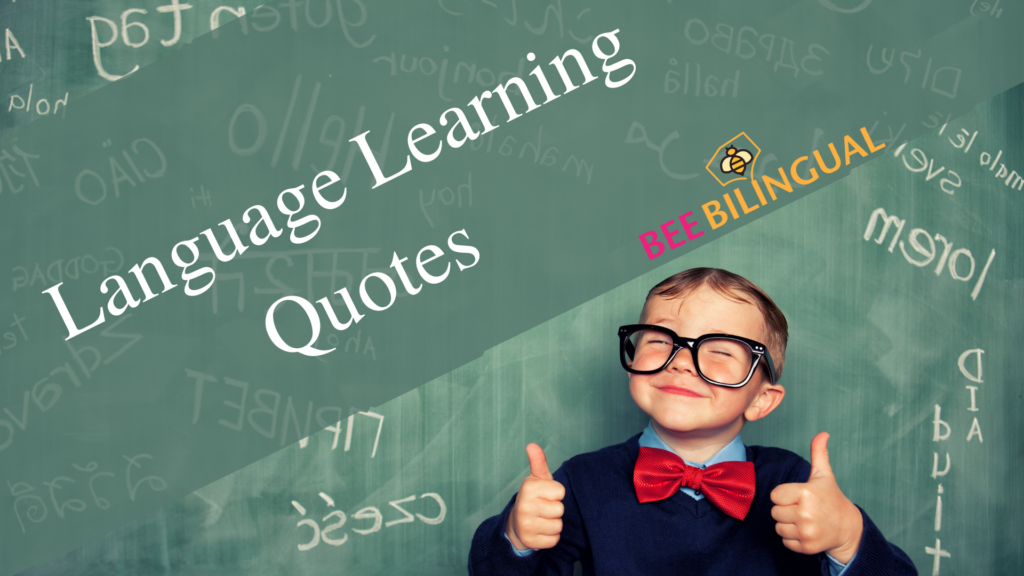
The language competence of bilingual kids (also the ones that are learning a second language in bilingual programs) shouldn’t be compared to the competence of monolingual children, as the “language proficiency profiles” of bilingual learners are always different. Language proficiency profiles are influenced by the context of use (people, places, etc.) and the different learning environments. This, in turn, influences their grammar, vocabulary, and language use in general. When you are reading about some of the most common myths in regard to early childhood bilingualism, it is very important that you bear in mind that language exposure and use are key to a bilingual upbringing.
6 very common Myths
So here we go, let’s look at 6 very common myths!
1. Learning more than one language from a young age will hinder children’s speech development and ability to acquire language in general.
One of the biggest fears that most parents of bilingual children have is that their kids will not only have problems speaking their second language but also that their first language will be negatively affected. However, various studies have shown that this is incorrect. Maneva & Genesee (2002), for example, suggested that bilingual children are able to conquer similar language milestones (first words, babbling…) as monolingual kids.
Note: Generally, language delay is very common amongst children, whether they are monolingual or bilingual. Language delay can be influenced by many different factors, and sometimes there is no real reason at all! Children learn at different paces and stages, whether they are learning one or two languages.
2. Children will mix up the two languages and this will have a negative effect on their language learning abilities in general.
Kids see language as a way to express their needs! Think about it this way; when monolingual children can’t come up with a certain word, they start to point at the object they want or create combination words or new words to attempt to describe the object. Bilingual kids, on the other hand, might simply use their second language instead. Their second language is a communication tool!
Parents also often assume that their bilingual kids need a clear “language separation” to avoid language confusion; a so-called one-parent/ one-language rule. However, studies have shown that children are able to differentiate between different languages from infancy. So, “mixing up” both languages isn’t necessarily a bad thing. It is very likely that your little bilingual speaker will use two languages in the same sentence at various stages of their language development. Sometimes this happens accidently, without any awareness of the code mix up.
This is completely normal and not a problem. Bilingual kids usually learn to adjust their language use to who they are speaking to. Later, formal education and/or language schools will influence their code-switching abilities and raise language awareness. Research has determined that incorrect, mixed-up sentences are rarely used by older bilingual kids.
3. My kids are going to learn better when they are more exposed to the second language.
Well, yes, there is a clear link between language exposure and language knowledge. We experience this ourselves when we go abroad, perhaps to a country that speaks a language that we know a little bit of. After a couple of days or weeks we start to understand more, and we pick up various words and sentences from around us. This same happens with bilingual kids that are exposed to both languages.
4. Kids with developmental problems/ language impairments shouldn’t learn a second language.
Research has shown that bilingual kids with developmental problems or language impairments, are not at a greater risk of worsening their conditions (Bird et al., 2005). However, more research in this field is needed!
5. Bilingual education needs to happen from infancy.
The earlier, the better! But that doesn’t mean that bilingual education should be avoided later. Many kids learn their first language at home, and then later, they learn their second language in nursery or school or even a language school. Again, exposure and language use are key to a bilingual upbringing!
6. Kids absorb another language easily.
Yes and no! Children do absorb language, but there is a limit that is often somewhat dismissed. Perhaps children who are exposed to a second language will be able to understand, but their grammar, as well as their speaking and writing skills need to be supported. As I mentioned, exposure is key, as is actual language use. Without speaking and making use of their understanding, children will quickly reach their second language limit.
Useful reading:
- https://www.researchgate.net/publication/276407358_Myths_About_Early_Childhood_Bilingualism
- Bird, E. K., Cleave, P., Trudeau, N., Thordardottir, E., Sutton, A., & Thorpe, A. (2005). The language abilities of bilingual children with Down syndrome. American Journal of Speech-Language Pathology, 14, 187–199. http://dx.doi.org/10.1044/1058-0360(2005/019)
- Maneva, B., & Genesee, F. (2002). Bilingual babbling: Evidence for language differentiation in dual language acquisition. In B. Skarbela, S. Fish, & A. H.-J. Do (Eds.), Boston University Conference on language development 26 Proceedings (pp. 383–392). Somerville, USA: Cascadilla Press.


